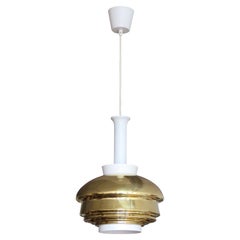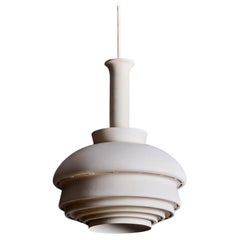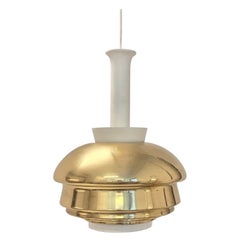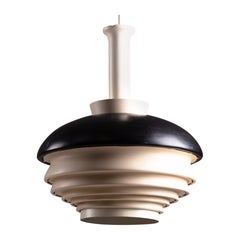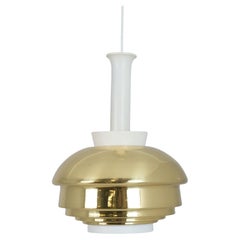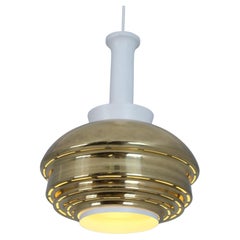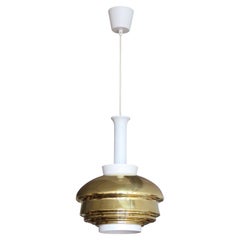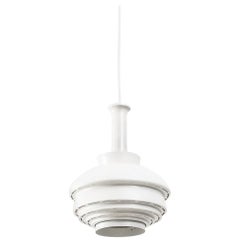Aalto A335b
Vintage 1950s Finnish Scandinavian Modern Chandeliers and Pendants
Metal, Brass
Vintage 1950s Finnish Mid-Century Modern Chandeliers and Pendants
Metal
Vintage 1950s Finnish Scandinavian Modern Chandeliers and Pendants
Metal, Brass
Mid-20th Century Finnish Mid-Century Modern Chandeliers and Pendants
Metal
Vintage 1960s Finnish Scandinavian Modern Chandeliers and Pendants
Metal, Brass
Vintage 1970s Finnish Scandinavian Modern Chandeliers and Pendants
Metal, Brass
Recent Sales
Vintage 1950s Finnish Scandinavian Modern Chandeliers and Pendants
Metal, Brass
20th Century Finnish Mid-Century Modern Chandeliers and Pendants
Mid-20th Century Finnish Mid-Century Modern Chandeliers and Pendants
Metal
Vintage 1950s Finnish Scandinavian Modern Chandeliers and Pendants
Metal
Vintage 1970s Danish Scandinavian Modern Chandeliers and Pendants
Metal
People Also Browsed
21st Century and Contemporary Philippine Art Deco Night Stands
Shagreen, Palmwood
21st Century and Contemporary Chandeliers and Pendants
Gold, Brass
2010s Turkish Mid-Century Modern Wall Lights and Sconces
Aluminum
21st Century and Contemporary American Mid-Century Modern Chandeliers an...
Brass
21st Century and Contemporary European Modern Dining Room Tables
Fiberglass, Ash
2010s American Mid-Century Modern Table Lamps
Brass
2010s French Modern Wall Lights and Sconces
Enamel
2010s Unknown Mid-Century Modern Dining Room Tables
Travertine
2010s Mexican Modern Wall Lights and Sconces
Copper
Vintage 1960s French Mid-Century Modern Desks and Writing Tables
Oak, Faux Leather
Vintage 1970s Austrian Post-Modern Sectional Sofas
Leather
Early 20th Century Belgian Art Deco Fireplaces and Mantels
Breccia Marble
2010s Italian Modern Table Lamps
Alabaster, Brass
21st Century and Contemporary American Art Deco Cabinets
Oak
21st Century and Contemporary British Daybeds
Paper
Mid-20th Century Indian Mid-Century Modern Office Chairs and Desk Chairs
Teak
Alvar Aalto for sale on 1stDibs
An architect and designer, Alvar Aalto deserves an immense share of the credit for bringing Scandinavian modernism and Nordic design to a prominent place in the global arena. In both his buildings and his vintage furniture — which ranges from chairs, stools, tables and lighting to table- and glassware — Aalto’s sensitivity to the natural world and to organic forms and materials tempered the hardness of rationalist design.
Relatively few Aalto buildings exist outside Finland. (Just four exist in the United States, and only one — the sinuous 1945 Baker House dormitory at M.I.T. — is easily visited.) International attention came to Aalto, whose surname translates to English as “wave,” primarily through his furnishings.
Instead of the tubular metal framing favored by the Bauhaus designers and Le Corbusier, Aalto insisted on wood. His aesthetic is best represented by the Paimio armchair, developed with his wife, Aino Aalto, in 1930 as part of the overall design of a Finnish tuberculosis sanatorium.
Comfortable, yet light enough to be easily moved by patients, the Paimio chair’s frame is composed of two laminated birch loops; the seat and back are formed from a single sheet of plywood that scrolls under the headrest and beneath the knees, creating a sort of pillow effect. Aalto’s use of plywood had an enormous influence on Charles and Ray Eames, Arne Jacobsen, Marcel Breuer and others who later came to the material.
Concerned with keeping up standards of quality in the production of his designs, Aalto formed the still-extant company Artek in 1935, along with Aino, whose glass designs were made by the firm. In the latter medium, in 1936 the Aaltos together created the iconic, undulating Savoy vase, so-called for the luxe Helsinki restaurant for which the piece was designed.
Artek also produced Aalto pendants and other lighting designs, many of which — such as the Angel’s Wing floor lamp and the Beehive pendant — incorporate a signature Aalto detail: shades made of concentric enameled-metal rings graduated down in diameter. The effect of the technique is essential Alvar Aalto: at once precise, simple, and somehow poetic.
Find a collection of vintage Alvar Aalto stools, vases, dining tables and other furniture on 1stDibs.
Finding the Right Chandeliers-pendant-lights for You
Chandeliers — simple in form, inspired by candelabras and originally made of wood or iron — first made an appearance in early churches. For those wealthy enough to afford them for their homes in the medieval period, a chandelier's suspended lights likely exuded imminent danger, as lit candles served as the light source for fixtures of the era. Things have thankfully changed since then, and antique chandeliers and pendant lights are popular in many interiors today.
While gas lighting during the late 18th century represented an upgrade for chandeliers — and gas lamps would long inspire Danish architect and pioneering modernist lighting designer Poul Henningsen — it would eventually be replaced with the familiar electric lighting of today.
The key difference between a pendant light and a chandelier is that a pendant incorporates only a single bulb into its design. Don’t mistake this for simplicity, however. An Art Deco–styled homage to Sputnik from Murano glass artisans Giovanni Dalla Fina, with handcrafted decorative elements supported by a chrome frame, is just one stunning example of the elaborate engineering that can be incorporated into every component of a chandelier. (Note: there is more than one lighting fixture that shares its name with the iconic mid-century-era satellite — see Gino Sarfatti’s design too.)
Chandeliers have evolved over time, but their classic elegance has remained unchanged.
Not only will the right chandelier prove impressive in a given room, but it can also offer a certain sense of practicality. These fixtures can easily illuminate an entire space, while their elevated position prevents them from creating glare or straining one’s eyes.
Certain materials, like glass, can complement naturally lit settings without stealing the show. Brass, on the other hand, can introduce an alluring, warm glow. While LEDs have earned a bad reputation for their perceived harsh bluish lights and a loss of brightness over their life span, the right design choices can help harness their lighting potential and create the perfect mood. A careful approach to lighting can transform your room into a peaceful and cozy nook, ideal for napping, reading or working.
For midsize spaces, a wall light or sconce can pull the room together and get the lighting job done. Perforated steel rings underneath five bands of handspun aluminum support a rich diffusion of light within Alvar Aalto's Beehive pendant light, but if you’re looking to brighten a more modest room, perhaps a minimalist solution is what you’re after. The mid-century modern furniture designer Charlotte Perriand devised her CP-1 wall lamps in the 1960s, in which a repositioning of sheet-metal plates can redirect light as needed.
The versatility and variability of these lighting staples mean that, when it comes to finding something like the perfect chandelier, you’ll never be left hanging. From the natural world-inspired designs of the Art Nouveau era to the classic beauty of Paul Ferrante's fixtures, there is a style for every room.
With designs for pendant lights and chandeliers across eras, colors and materials, you’ll never run out of options to explore on 1stDibs — shop a collection today that includes antique Art Deco chandeliers, Stilnovo chandeliers, Baccarat chandeliers and more.
